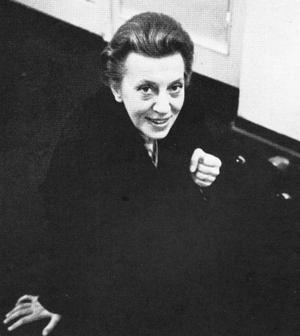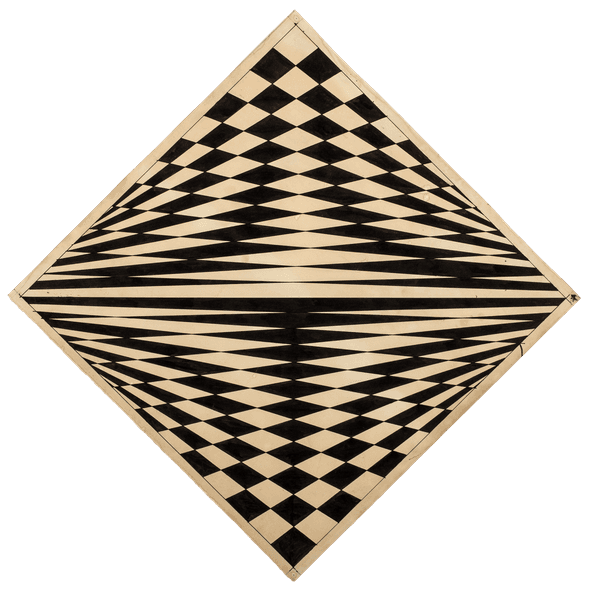Dadamaino
Dadamaino was born Eduarda Emilia Maino in 1935 in Milan. Self-taught, Dada (a phonetic truncation of Eduarda) was drawn to art after studying at medical school, and by meeting Piero Manzoni in 1957, who would become a life-long friend. In 1958 she aligned herself with the Milanese avant-garde and created her first substantial body of work, the Volumi: pierced canvases which recall Fontana’s Buchi. This same year Dadamaino had her first solo show at the Galleria dei Bossi in Milan. She said then of her work: “I have always loathed matter, and I have always sought immateriality. Of course, Fontana played a key role in the evolution of my painting; [...] Had Fontana not pierced canvas, I would probably not have dared either. Matter was completely removed to the extent that even portions of the canvas became visible, they were stripped of every material element and rhetorical embellishment in order to return to the purity of a ‘tabula rasa’.”
In 1959 she joined the Milan-based experimental group Azimuth (founded by Bonalumi, Castellani and Manzoni) which had connections with the Zero Group in Germany, as well as Group Nul in the Netherlands, and Groupe Motus in France. In 1961 the artist took part in a show in the Netherlands, where her name was mistakenly spelt as one word: Dadamaino. Soon, charmed, she would adopt this name entirely. In 1962 her work was featured in the major Nul group exhibition at the Stedelijk Museum in Amsterdam. This same year she joined the newly founded Nouvelle Tendence movement whose members included Getulio Alviani, Bruno Munari, Jesús Raphael Soto and Enzo Mari. In the first half of the decade, particularly fascinated with the idea of movement she created a series of optical-dynamic objects, these were followed by the Ricerca del colore (1966-68) in which she undertook a scrupulous analysis of the solar spectrum’s chromatic combinations.
Dadamaino's cycle I fatti della vita was shown in a solo room at the Venice Biennale in 1980. Three years later a large retrospective of her work was organized by the Padiglione d’Arte Contemporanea (PAC) in Milan, and in 1990 she participated again in the Venice Biennale. A full retrospective of her work was mounted by the Bochum Museum in 2000.
Featured Artists
- Ancart Harold
- Andre Carl
- Avery Milton
- Baldessari John
- Barnes Ernie
- Brice Lisa
- Castellani Enrico
- Crawford Brett
- Dadamaino
- Dávila Jose
- de Tollenaere Saskia
- Downing Thomas
- Dyson Julian
- Elsner Slawomir
- Freud Lucian
- Gadsby Eric
- Gander Ryan
- Guston Philip
- Haring Keith
- Held Al
- Hockney David
- Katz Alex
- Kentridge William
- Knifer Julije
- Le Parc Julio
- Leciejewski Edgar
- Léger Fernand
- Levine Chris
- LeWitt Sol
- Marchéllo
- Mavignier Almir da Silva
- Miller Harland
- Modé João
- Morellet François
- Nadelman Elie
- Nesbitt Lowell Blair
- O'Donoghue Hughie
- Perry Grayson
- Picasso Pablo
- Pickstone Sarah
- Prehistoric Objects
- Quinn Marc
- Riley Bridget
- Ruscha Ed
- Serra Richard
- Shrigley David
- Smith Anj
- Smith Richard
- Soto Jesús Rafael
- Soulages Pierre
- Spencer Stanley
- Taller Popular de Serigrafía
- The Connor Brothers
- Turk Gavin
- Vasarely Victor
- Wood Jonas


